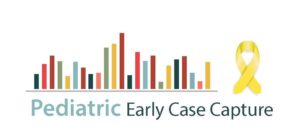Childhood Cancers
Childhood cancer is the second leading cause of death among children, after Injuries. In Louisiana, about 200 children under the age of 20 are diagnosed with cancer each year. The most common types of cancer in children are leukemia, cancers of the brain and nervous system, and lymphoma. Despite noted improvements in pediatric survival rates, interest in the causes of cancer, effectiveness of treatment and late effects from the cancer treatment remains high.
Facts and Figures
Louisiana Cancer Facts & Figures, Early Case Capture (ECC), 2016
Earlhttp://wp-content/uploads/2016/11/LA Cancer Facts & Figures_ECC.pdfy Case Capture of Pediatric and Young Adult Cancers (ECC)
In 2008, the US Congress signed into law the Caroline Pryce Walker Conquer Childhood Cancer Act, which created the Early Case Capture of Pediatric and Young Adult Cancers program (ECC) to increase the availability of timely pediatric cancer data for the surveillance, clinical, and research communities. The LTR responded by enhancing its routine cancer surveillance activities and building sustainable infrastructure for identifying new pediatric and young adult (ages 0‐19) cancer cases within 30 days of diagnosis.
Reporting requirements: Only the pathology report and basic demographic data.
Key Criteria for Case Selection:
- Diagnosis Date: January 1, 2012, forward
- Age at Diagnosis: Age 0‐19
- Reportable Diagnoses:
- All ICD‐O‐3 diseases with a behavior code of “/2” (in situ disease) or “/3” (malignant disease), except:
- Basal and squamous cell carcinomas of the skin
- Prostatic intraepithelial neoplasia
- Cervical intraepithelial neoplasia (high grade/CIN III) and severe dysplasia of the cervix
- All solid tumors of the brain and central nervous system, including the meninges and intracranial endocrine structures, listed in the ICD‐O‐3 with behavior codes of “/0” (benign disease) or “/1” (disease of uncertain malignant potential)
- Diagnostic Confirmation: With the exception of brain tumors, all cases must be microscopically confirmed.
- Timeframe for Facility Reporting to Louisiana Tumor Registry:
- By the end of September 2014, Early Case Capture reports (selected data items only, see below) are to be submitted to the Louisiana Tumor Registry within 30 days of diagnosis. Complete reports must be submitted within normal reporting timeframe (six months from diagnosis or first contact).
Reporting Options
Hospitals, facilities and healthcare providers may use the following options to comply with the LTR reporting requirements of ECC:
- Transmit electronic pathology reports of cancer diagnosis from facilities to the LTR in real time and provide the basic demographic data
- Report cases using LTR online tool (designed specifically for ECC cases) and secure website. To obtain access, contact Brent Mumphrey, bmumph@lsuhsc.edu.
- Transmit hard copies of pathology reports with demographic and FU information via WebPlus, fax (504/568-5800), or courier
- Allow LTR staff access to medical records to abstract such cancer cases every month
Data Items for Early Case Capture Reports:
- Record Type
- NAACCR Record Version
- Accession Number—Hosp*
- Last Name*
- First Name*
- Middle Name, if available*
- Birth Date
- Age at Diagnosis
- Social Security Number, if available*
- Addr at DX‐‐City*
- Addr at DX—No & Street* Addr at DX—Postal Code*
- Addr at DX—State
- Addr at DX—Supplementl*
- County/Parish at DX
- Addr Current‐‐City *
- Addr Current—No & Street*
- Addr Current—Postal Code*
- Addr Current—State*
- Addr Current—Supplementl*
- County‐‐Current*
- Patient Phone Number *
- Physicians (Managing, FU, Primary Surgeon and Others) as available*
- Sex
- Race
- Spanish/Hispanic Origin
- Primary Site (ICD‐O‐3)
- Histology (ICD‐O‐3)
- Behavior (ICD‐O‐3)
- Laterality
- Date of Diagnosis Note: May be approximate.
- Date of 1st Contact*
- Diagnostic Confirmation
- Sequence Number—Hospital*
- Type of Reporting Source
- Reporting Facility*
- NPI‐Reporting Facility, if available*
- Follow‐up Contact‐‐City, if available*
- Follow‐up Contact—State, if available*
- Follow‐up Contact – Postal, if available*
- Follow‐up Contact—House number and street, if available*
- Follow‐up Contact—Supplementary address information, if available*
- Follow‐up Contact‐‐Name, if available*
*Not transmitted to the CDC. For dates, only month and year are transmitted to the CDC.

